The 10 Largest Land Carnivores On Earth
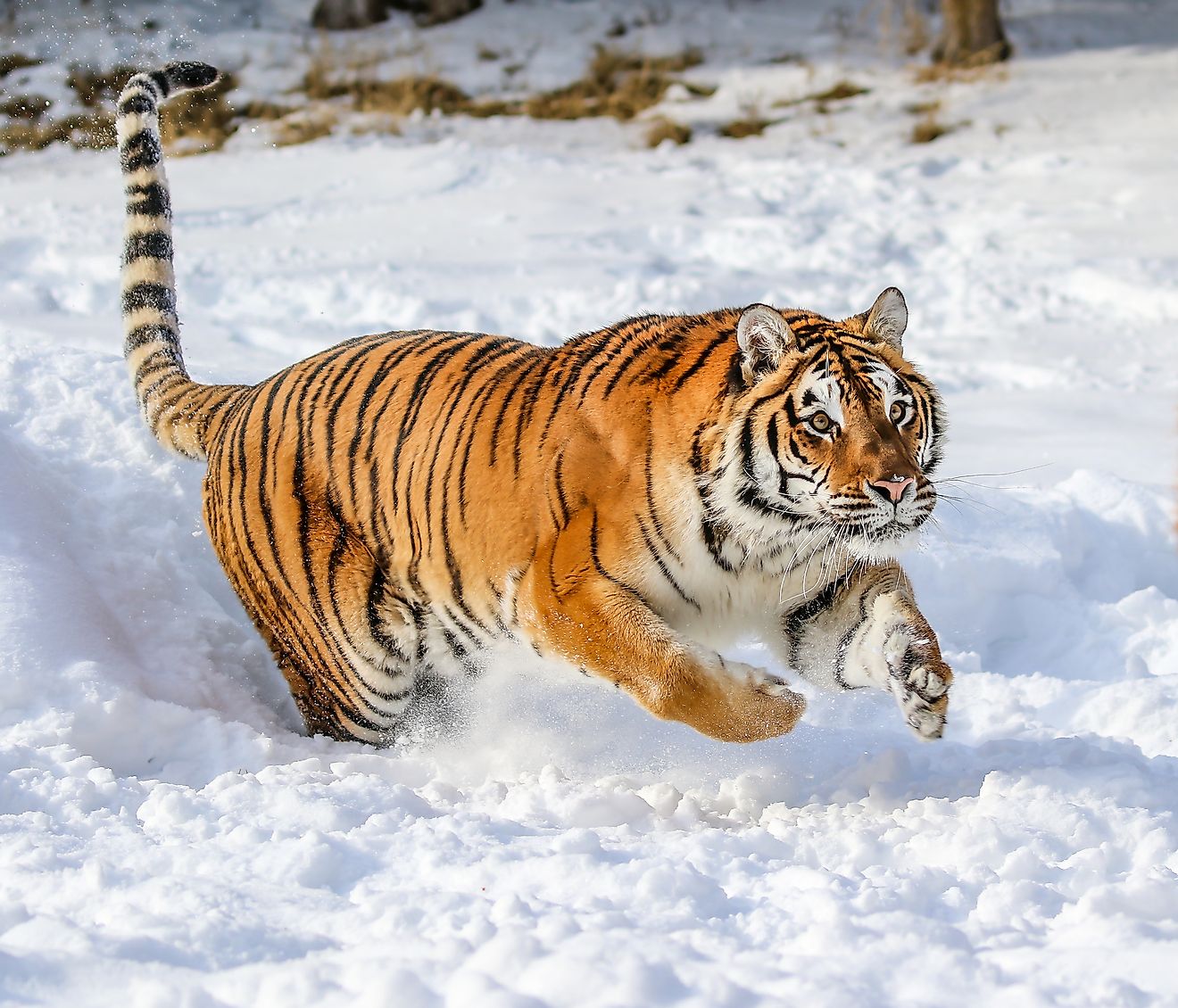
- The polar bear is the largest land carnivore in the world.
- Most of the world's largest land carnivore species are classified as endangered, vulnerable, or threatened.
- Not all of the world's largest land carnivores are completely carnivorous, and will eat other things such as fruits and vegetation.
A carnivore is an organism that eats meat or the flesh of other organisms. There are many reptiles, amphibians, and insects that are carnivores. Even plants can be carnivores. But when we think of carnivores, we mostly think of large animals, like lions, tigers, and bears. The largest carnivorous creature, the blue whale, lives in the ocean, but most large carnivorous species are land-based. Meet the ten largest land carnivores on Earth. The last mention on the list might come as a surprise.
1. Polar Bear
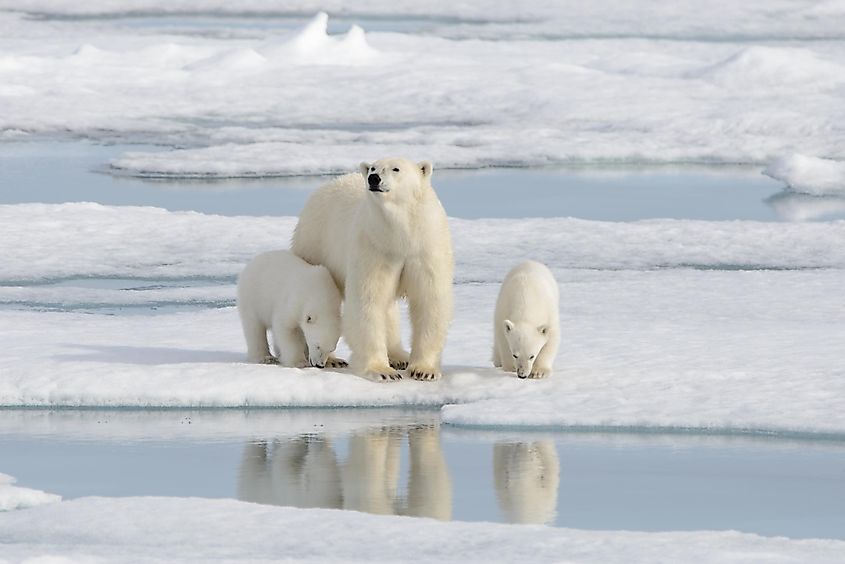
The polar bear is the largest land carnivore in the world. The average specimen weighs 360 kg. Polar bears require a lot of fat in order to survive the frigid climate in which they live which is why they primarily prey on seals that have high-fat content, though they will eat other animals if they are available. Polar bears live in the frigid arctic lands of the US (Alaska), Canada, Russia, Greenland, and Norway (Svalbard). They thrive particularly in areas with a lot of sea ice, which they need to use in order to navigate when hunting prey. Due to climate change, however, the amount of sea ice in areas where polar bears live is significantly decreasing, threatening the very existence of the species.
2. Brown Bear
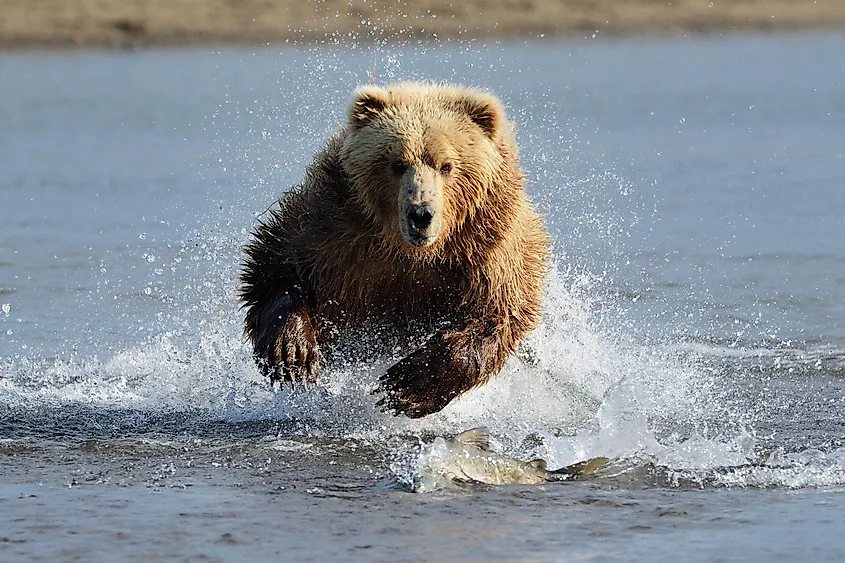
Another bear species known as the brown bear is the second-largest land carnivore, weighing in at an average of 318 kg. There are over 80 types of brown bears and some are significantly larger than others. Their natural habitat consists of areas of Europe, Asia, and northwestern North America. In North America, brown bears are usually referred to as grizzlies or grizzly bears. Although brown bears do eat berries, plant roots and shoots, their primary diet consists of small mammals, fish, the calves of hoofed animals, and carrion. These bears have great dexterity in their limbs. They can stand on two feet and can even pick things up with their fingers (paws). Brown bears can also dig, which they often do when trying to hunt down rodents.
3. Bengal Tiger
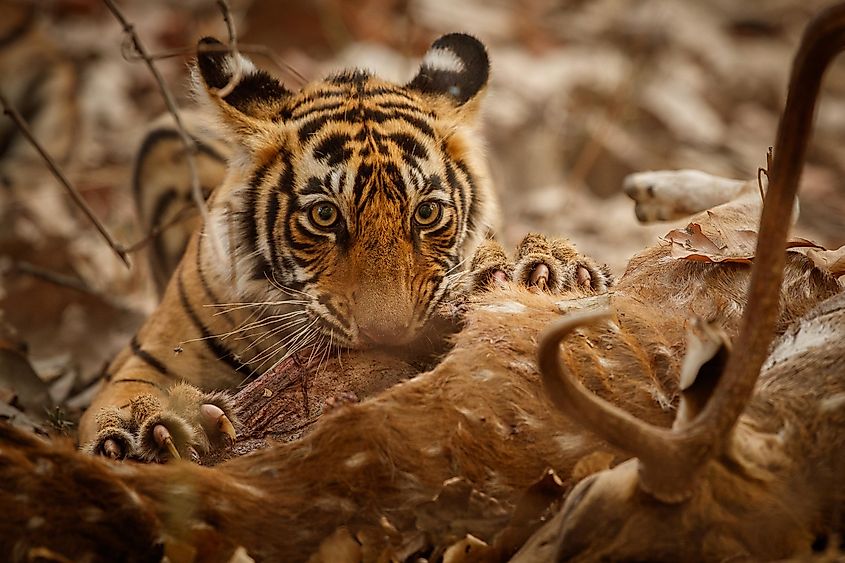
The Bengal tiger is the largest member of the cat family and the third-largest land carnivore in the world, weighing in at a whopping 227 kg on average. As its name implies, the Bengal tiger lives in Bangladesh, though in small numbers. The largest population of this species is found in India. There are also smaller groups of them in Nepal and Bhutan. Their habitat normally consists of rainforests, marshes, and tall grasslands. The Bengal tiger’s diet consists primarily of ungulate mammals, such as deer, water buffalo, and wild boar. To hunt, the tigers use their coats to camouflage themselves and wait until their prey is close, at which time they stealthily lunge at the side or behind the prey to claw it or bite its neck. The IUCN lists the Bengal tiger as an endangered species with a decreasing population.
4. African Lion
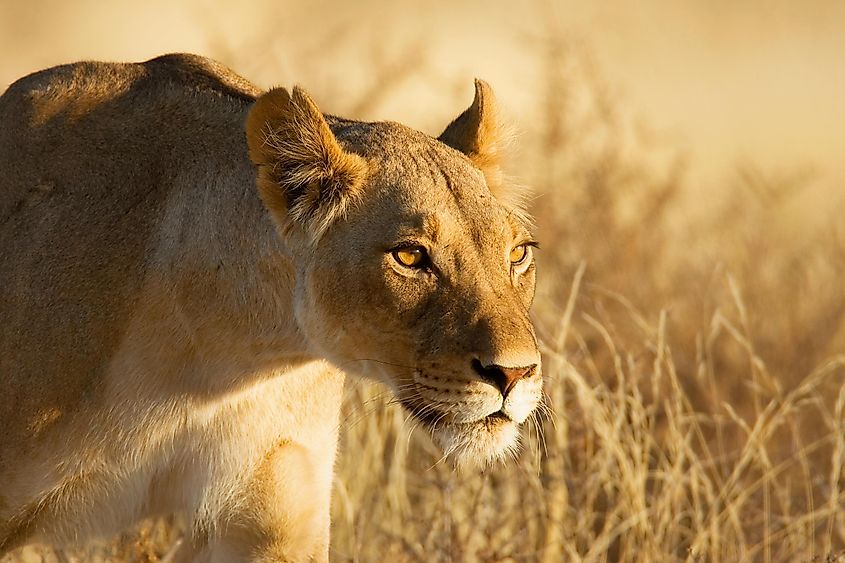
The lion is often called the king of beasts. It’s no wonder, then, that they are massive creatures, weighing an average of 200 kg. The African lion in particular can grow to be 3 meters long from head to tail. At one time, these lions lived in every part of Africa. Today, however, their habitat has shrunk to central and southern Africa, consisting mainly of shrubs, grasslands, and open woodlands. African lions normally hunt large animals, such as zebras, hogs, wild rhinos, hippos, and wildebeests. The hunters of a lion pride (family) are mostly female and work in hunting parties, while the males are responsible for protecting the pride. They surround their prey before taking it down and hunting is usually done at night. Oftentimes, these lions will stick around bodies of water because it is where much of their prey gather.
5. American Black Bear
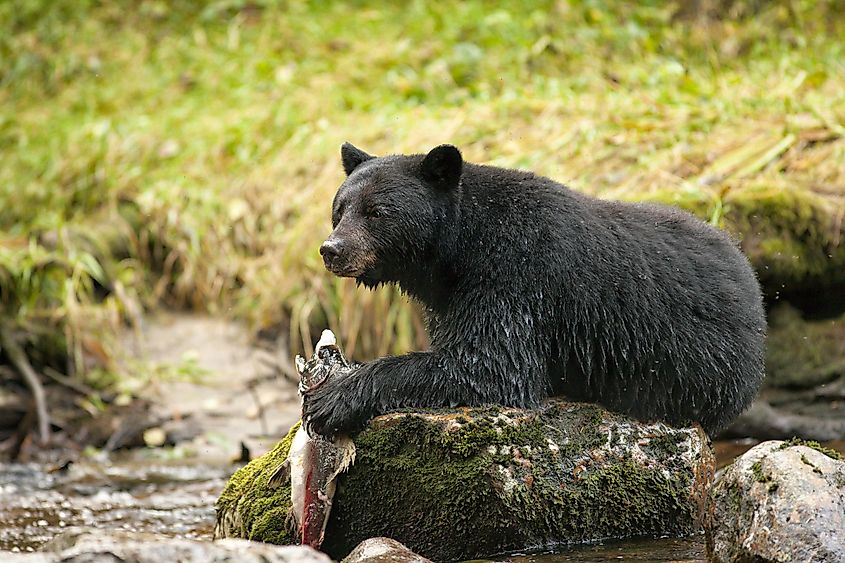
The American black bear is the most common bear found in the forests of North America. They weigh an average of 159 kg and can be between 1.5 and 1.75 meters tall (5-6 feet). Contrary to its name, the American black bear is not always black, but can be a variety of colors. In fact, this species is sometimes confused with the brown bear because it can be a similar color, though actual brown bears are much larger. The American black bear’s diet changes with the seasons. In the summer and fall, these bears mainly subsist on fruit, nuts, roots, ants, and honey. During the spring, however, they are known to kill and consume moose calves and deer fawns. They may also feed on dead carcasses. As humans have encroached onto their habitat, these bears may also try to steal food from garbage left by people.
6. Asiatic Black Bear
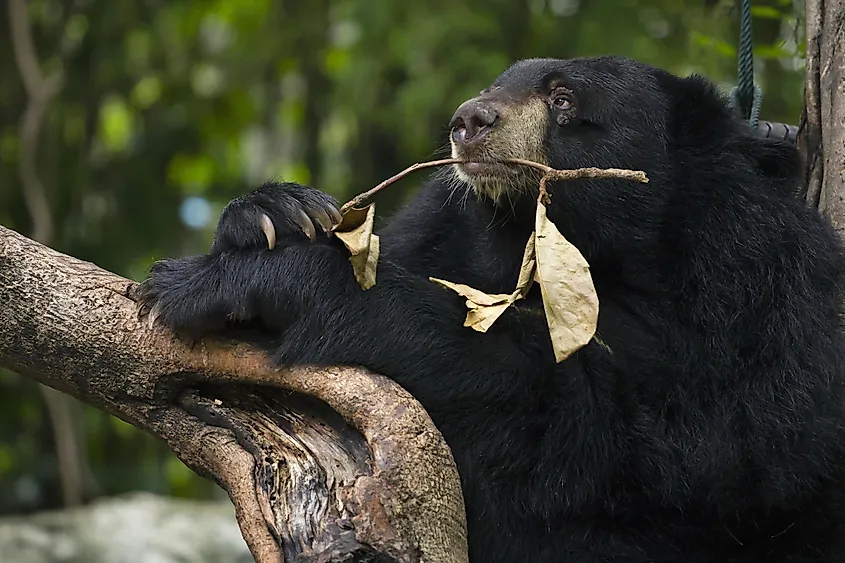
The Asiatic black bear is found in a large part of East Asia, mainly in forested areas. They live in the mountainous areas of Afghanistan, Pakistan, northern India, Nepal, Burma, and China. They are also found in northeastern China, the Korean Peninsula, southeastern Russia, Taiwan, and the Japanese islands of Honshu and Shikoku. These bears weigh an average of 136 kg. Adult bears are 1.25 to 2 meters long (50 to 75 inches). The creatures that the Asiatic black bear feeds on include insects, invertebrates, small vertebrates, and carrion. They have also been known to kill and eat livestock.
7. Spectacled Bear
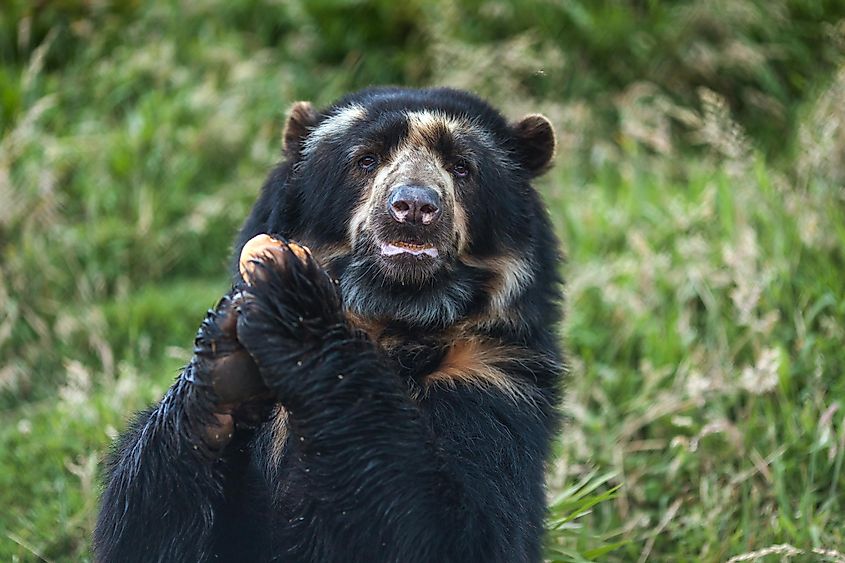
The spectacled bear is the only bear species native to South America. They live in the cloud forests of the Andes, and in the high Andean moorland, in an area stretching from Venezuela to northern Argentina. Like the Asiatic black bear, the spectacled bear weighs an average of 136 kg. Their front legs are longer than their rear legs, making this bear species an excellent climber. The spectacled bear’s diet includes insects, small rodents, and birds, though they mainly feed on fruit and plants, including those high up in the trees.
8. Sloth Bear
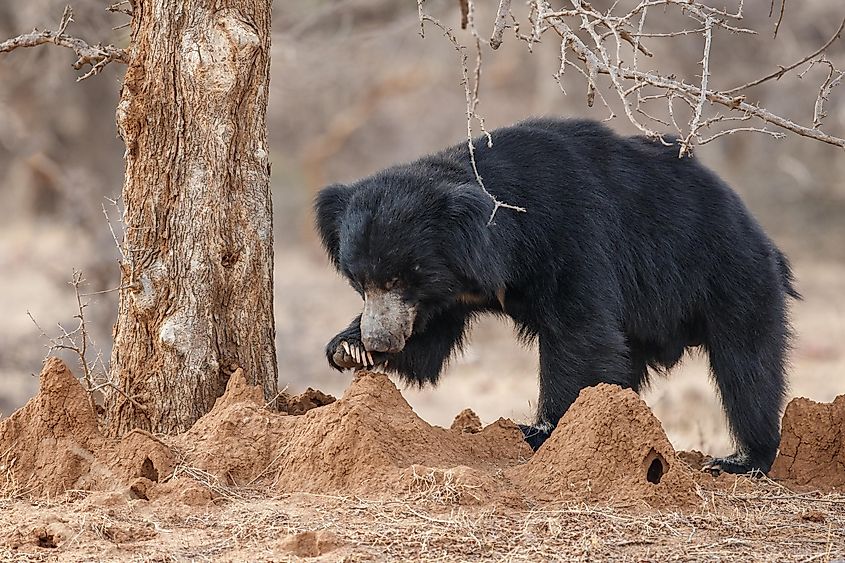
The sloth bear lives in the forested areas and grasslands of India and Sri Lanka, with smaller numbers appearing in Bangladesh, Nepal, and Bhutan. They prefer to live in drier forests and areas with rocky outcrops, at lower elevations. Like the Asiatic black bear and spectacled bear, the sloth bear weighs an average of 136 kg. The mainstay of this bear’s diet is termites. In fact, sloth bears are especially capable of consuming termites because their mouths are designed in such a way that allows them to suck the termites into them. Sloth bears also eat other insects, eggs, honeycombs, carrion, and other vegetation.
9. Jaguar
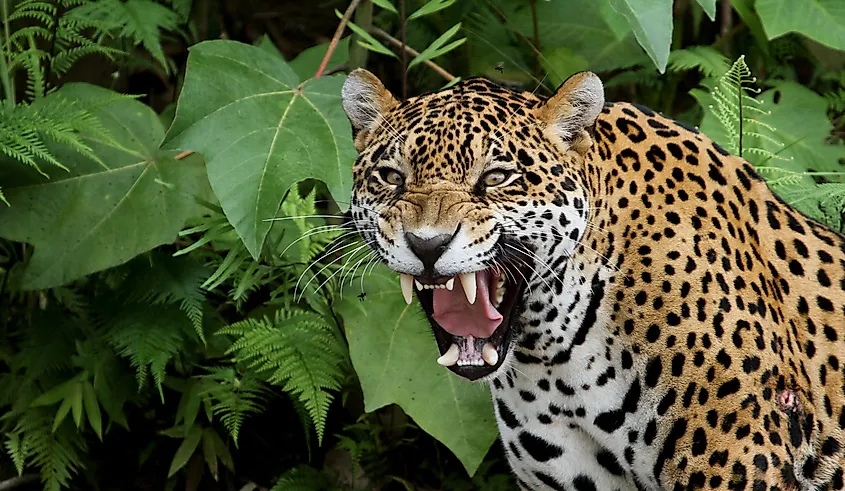
The jaguar is the largest member of the cat family in the Americas, weighing an average of 113 kg. It primarily lives in the swamps and woodlands of central and South America. The largest number of jaguars can be found in the Amazon Rainforest. Like other large members of the cat family, the jaguar hunts by stalking and ambushing its prey. In fact, the word jaguar comes from an Indigenous word, Yaguar, literally meaning “he who kills with one leap.” The jaguar is swift, agile, and a very good climber, though they hunt mainly on the ground. Their prey includes capybara, peccary, deer, birds, crocodilians, and fish.
10. Giant Panda
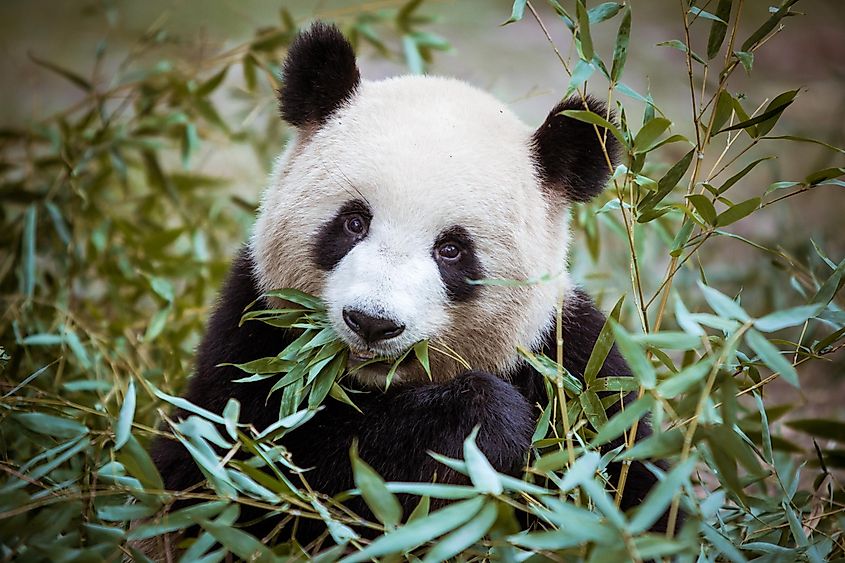
The mention of the giant panda might come as a surprise as it is generally known to feed on bamboo and hence regarded as a carnivore. However, science has revealed that the bamboo diet of the species is very similar to the diet of a carnivoran. The giant panda also has a digestive system resembling that of the carnivores. Hence, it is sometimes referred to as a closet carnivore. It is considered a national treasure in China. At one time, they roamed a large area of the country’s south and east. Now, however, they live only in small patches of bamboo forests, in China’s southwest. This bear weighs an average of 113 kg. They subsist primarily on bamboo, of which they must eat between 12 and 38 kg per day. They also, however, will hunt for pikas and other small rodents. The giant panda is one of the most vulnerable bears in the world, though recent conservation efforts have led to increases in their numbers.
The 10 Largest Land Carnivores On Earth
| Rank | Common name | Average mass (kg) | Native range by continent |
|---|---|---|---|
| 1 | Polar bear | 360 | North America, Eurasia |
| 2 | Brown bear | 318 | North America, Europe, Asia |
| 3 | Bengal Tiger | 227 | Asia |
| 4 | African Lion | 200 | Africa, Asia |
| 5 | American black bear | 159 | North America |
| 6 | Asiatic black bear | 136 | Asia |
| 7 | Spectacled bear | 136 | South America |
| 8 | Sloth bear | 136 | Asia |
| 9 | Jaguar | 113 | North America, South America |
| 10 | Giant panda | 113 | Asia |











